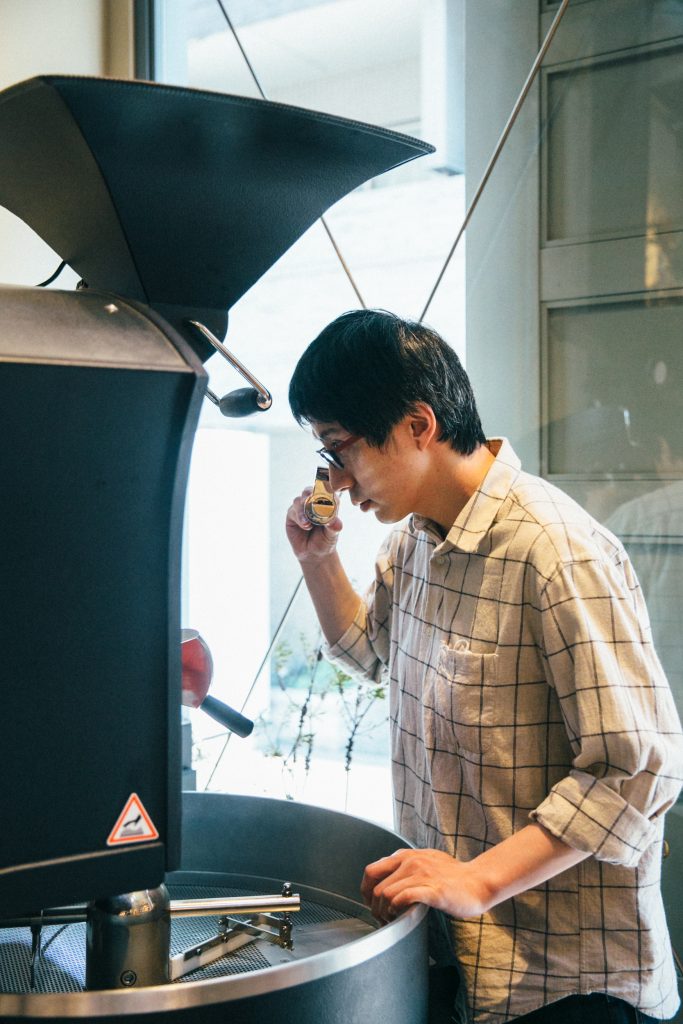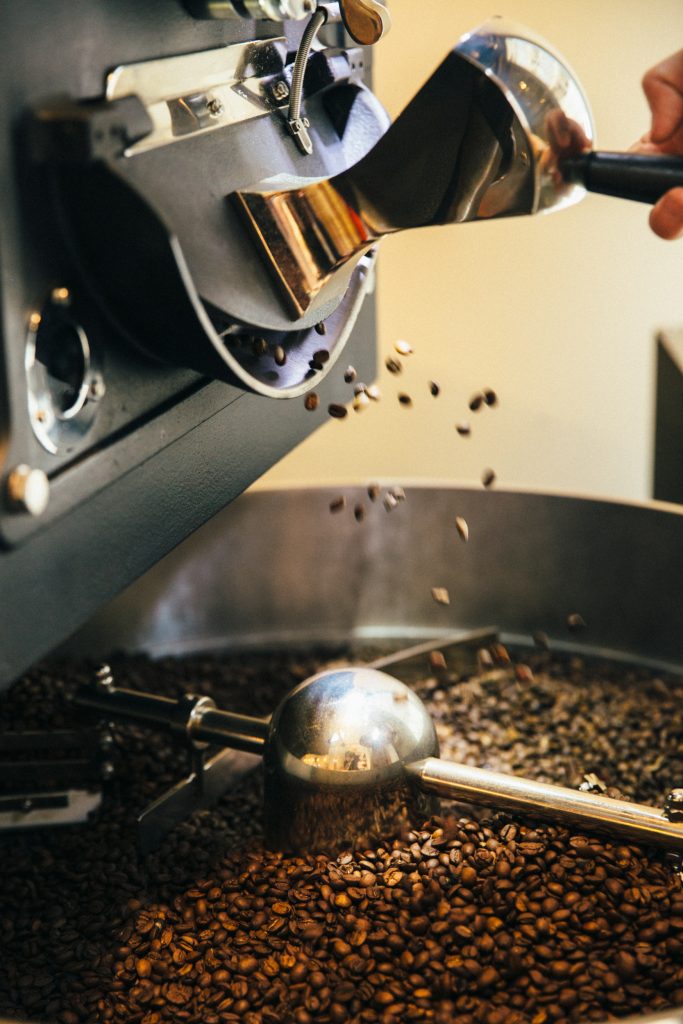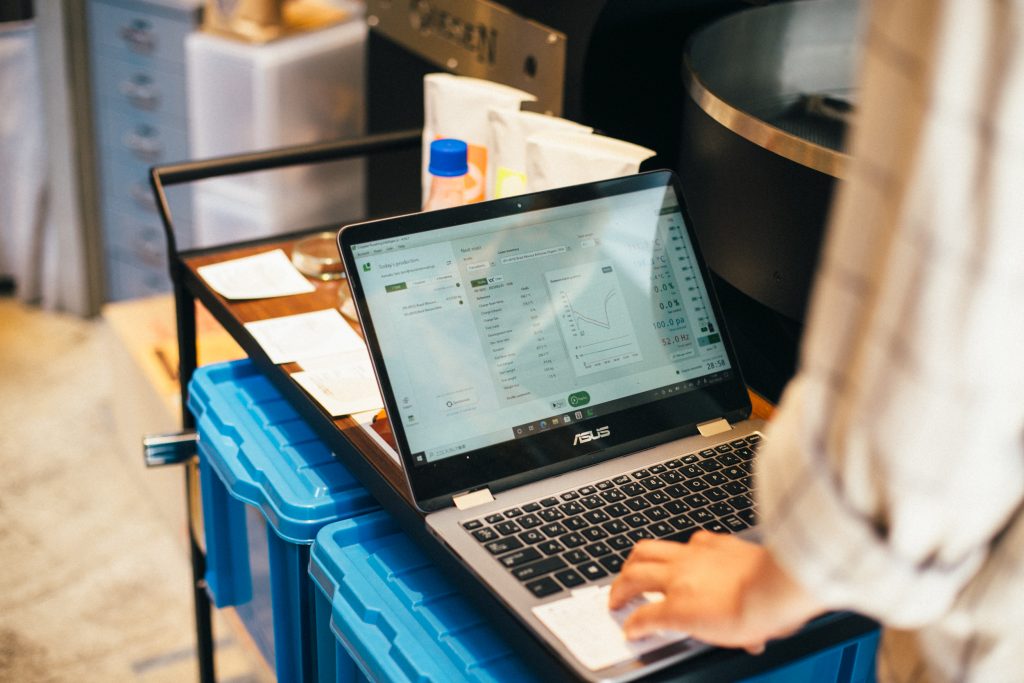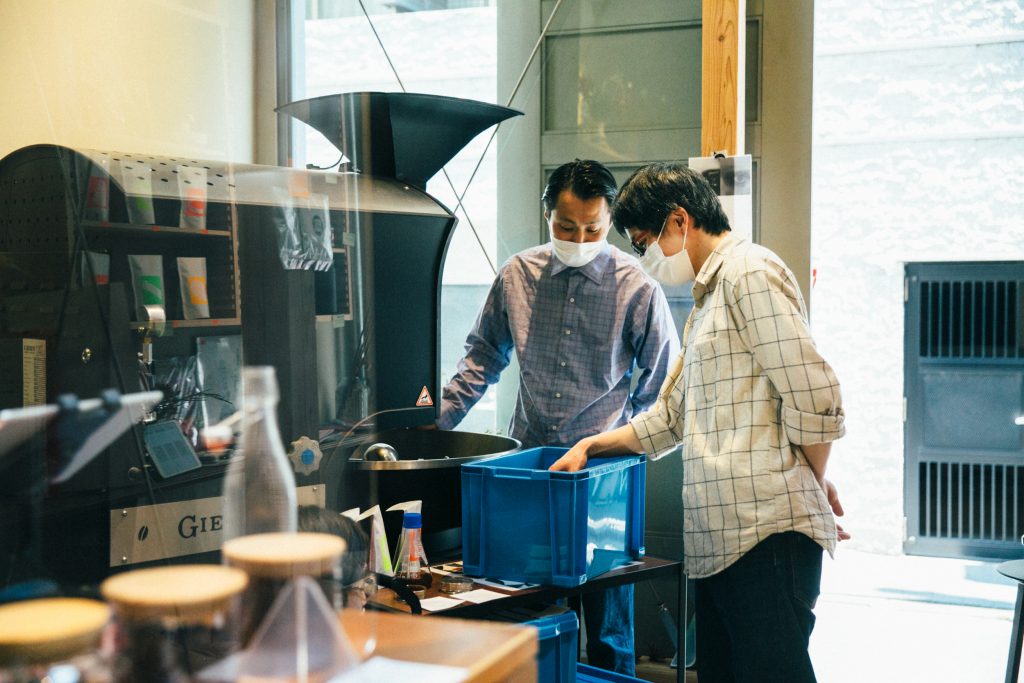


Clean aftertaste and character enhanced by sensation and experience
●Tell me about your time as a student?
I was a confident runner and long jumper on the track and field team, but halfway through my studies, a friend invited me to join the dance team. So, I did and continued doing so until I entered university. At university, I was enrolled in the English literature department, so I was vaguely interested in going abroad and thought that someday I would.
●Where did you go when you first left Japan?
I traveled to Christchurch, New Zealand to learn English and spent every day studying but still struggled to keep up.
●When did you first become interested in coffee?
After graduating from university, I went to New Zealand for about a year. At that time, I didn’t even know what coffee was. I mean, of course, I was drinking coffee, but I was mainly in New Zealand to learn the language, rather than to study coffee. I think it was more from the time I returned to my hometown of Sendai that I became more familiar with coffee.
●When did you decide to start making coffee?
After returning to Sendai, I was freelancing, so I spent my time working part-time at a Starbucks while learning about coffee. After a while, I thought it was time to get a job, so I looked for a job where I could use my English skills and eventually found a job as an English teacher. I did that for about two years. During that time I was also roasting coffee beans at home on the gas stove. I was experimenting a lot with my roasts and suddenly my passion for coffee overtook my passion for English. I heard that Australia was famous for coffee, so I decided to quit my job and go to Australia to learn about coffee.
●What was the coffee culture like in Australia?
At first, I was hired by a café run by a Japanese guy living in Sydney, and I spent my days serving espresso to the local customers. It was hard work because it was crowded, especially in the morning. And at this shop, there was no such thing as a ‘caramel Frappuccino’, so it felt totally different to Starbucks. The customers who came to drink coffee were very picky about it. And they would often express their opinions on the coffee, saying things like, “this tastes a little thin.” So serving them in English was very difficult for me. However, I was able to study and adjust the espresso machine by myself, and slowly but surely learned the faces of the regular customers and their coffee preferences. Soon I was able to prepare their coffee as soon as I saw them and hand it to them when they got to the counter. This person wants an extra shot, this person likes it extra hot, this person drinks it with soy, and so on. I worked like this for six months and then moved on to the next place, accumulating experience as I traveled around the country.
●What café did you go to next?
I didn’t go to a cafe, but to a farm. Australia has a unique visa system, whereby if you work at a farm, you can extend your stay for an extra year. So I decided to work at a coffee plantation. Basically, my job was to harvest coffee, but since summer is the harvest season, I only worked during the peak season from October to December. After working at the farm, I decided to go to Melbourne and work at a local cafe for another six months.
●You must have matured a lot in Sydney, with your experience in cafes and coffee farms.
I thought to myself that I would succeed. I went to Melbourne with a lot of confidence. But after visiting 20 or 30 cafes, I couldn’t get hired at all….. I guess from an Australian person’s perspective I was still too young to be a barista. Most places require at least one year of experience. I’m glad that in the end, I was able to get hired!
●Where did you go after that?
I moved to Perth. I had heard that it was a very beautiful place, and I was already planning to go there someday. Thinking back, I remember having a lot of fun there, not only with coffee, but also with scuba diving, hiking, and drinking together with friends. I have not always been that interested in traveling, but I was honestly surprised to learn how much fun it was to explore new worlds while moving around like this. During that trip, I also obtained a scuba diving license, I even had an encounter with two huge whales, which left a big impression on me. It is unusual to see whales even on whale-watching tours, so to be able to see two whales at the same time was a precious moment for me, and I was very overwhelmed.
It was great to be able to experience the entire process as a person involved in the coffee industry.
●Are there any other coffee-related things that have impressed you in Australia?
Once a year, Melbourne hosts the Melbourne International Coffee Expo (MICE), the world’s largest coffee festival, which lasts for three days and attracts coffee shops from all over Australia. Coffee lovers from all over the country gather to celebrate coffee all day long, and there is also a barista competition with cash prizes.
●In terms of coffee, what do you think are the differences between Japan and Australia?
There is a stream of consciousness that runs through the farming process of coffee beans to the preparation of coffee that I think is very unique to Australia. It was great to be able to experience the entire process as a person involved in the coffee industry.
●When did you become a coffee roaster?
I returned to Japan from Perth and then went to Vancouver, Canada. A friend of mine introduced me to a coffee roastery there and I started working. The Vancouver coffee scene, with its preference for filter coffee, is quite different from the espresso-centric scene in Australia. Of course, espresso is the main ingredient, but in addition to espresso, there are many different styles of brewing in North American culture, and Vancouver had a similar culture. Of course, I worked as a barista at first, but on my days off, I would visit my roaster friend and began learning more about coffee roasting. Of course, I didn’t get paid (laughs), but I went there out of curiosity.
●Please tell us about your encounter with SR.
I went to New Zealand again for a working holiday, but this time I worked at a coffee stand with a small roasting machine and started roasting there to make use of my experience in Canada. At that time, a Japanese-looking person came into the store for coffee training, and he made a big impression on me because he was called Kate even though he was a man. When I first met him, I didn’t think he was Japanese. So I spoke to him in English, but eventually, I realized he was Japanese! That customer was in fact Mr. Wataru Kato from SR. Many people seem to wrongly read his last name as “Kate”! I was Mr. Kato’s teacher during the training session and it was that encounter that led me to SR after I returned to Japan.
●So you had a close relationship with your teacher and also with your student. Have you been roasting in New Zealand since then?
For a while, I worked at a café in Auckland as a senior barista, teaching the staff, but I wanted to try working with coffee in Japan, and since I had a long-distance girlfriend I decided to return home.
●Did you start roasting immediately after returning to Japan?
Yes, I did. I worked at a roaster and cafe called ‘The Cream of the Crop Coffee’ in Kiyosumi Shirakawa. I was in charge of roasting and brewing the coffee.
●Did you find any differences between running a coffee shop in Japan and overseas?
Basically, I feel that the flow of customers in Japan is constant and loose. After all, I’ve been abroad for about five years, and every country I’ve been to tends to be busy in the morning, so that’s a distinct difference. I like the atmosphere in both places, though.
●Was it the chance meeting you made with Mr. Kato, whom you met in New Zealand, that finally led you to work for SR?
We had talked about the possibility of opening a store together in Japan. Mr. Kato went back to Japan before me and told me that he had started a store. So in August 2020, while also working in the shop in Kiyosumi, I started working at the SR stores in Otemachi and Yurakucho as well. And then later on I finally decided to come to Kabutocho to become their roaster.
Brewing and roasting coffee involves the nuances of a person's senses and that affects the roast of the coffee.
●I would like to ask you about roasting. Can you tell me about the particulars and sensory aspects of roasting?
The taste of coffee is all determined by the roaster’s roast, but since it is largely based on the roaster’s own senses, it cannot be measured in terms of data. That’s why I believe in my own experience when I roast. I think there are as many styles of roasting as there are roasters in the world! as there are people who listen to classical music for their beans (laughs).
●How many varieties of coffee are roasted at SR? And what are the characteristics of each one?
We have a total of six single origins from Brazil, Ethiopia, and Ecuador, and one blend that comes roasted from Sweden. At SR we have four types of green beans, so we’ve already begun to make a Tokyo blend, but we would like to create other original blends in the future. The characteristics of the coffee, for both espresso and filter, are that they have a clean aftertaste. I was surprised when I first tasted it myself. And so I’ve made it one of my goals to express the “cleanliness” of the coffee while maintaining the flavor of the green beans.
●What kind of coffee would you like to roast in the future?
Of course, we are aware of surrounding trends, and we share information with the roasters in Sweden frequently, but we try to roast to the best of our ability and by making adjustments due to the unique climate of Japan. Also, I would like to purchase and experiment with green beans from France that are not yet available in Japan. Brewing and roasting coffee involves the nuances of a person’s senses and that affects the roast of the coffee. The dutch roasting machine that we currently use is something I have never worked with before, but the roastery in Sweden uses the same one, so I will continue to make adjustments here at the Kabutocho store, constantly tasting the coffee every day to check its quality. The aroma will change the atmosphere of the town, and I hope it will also make it easier for people to enter the store.
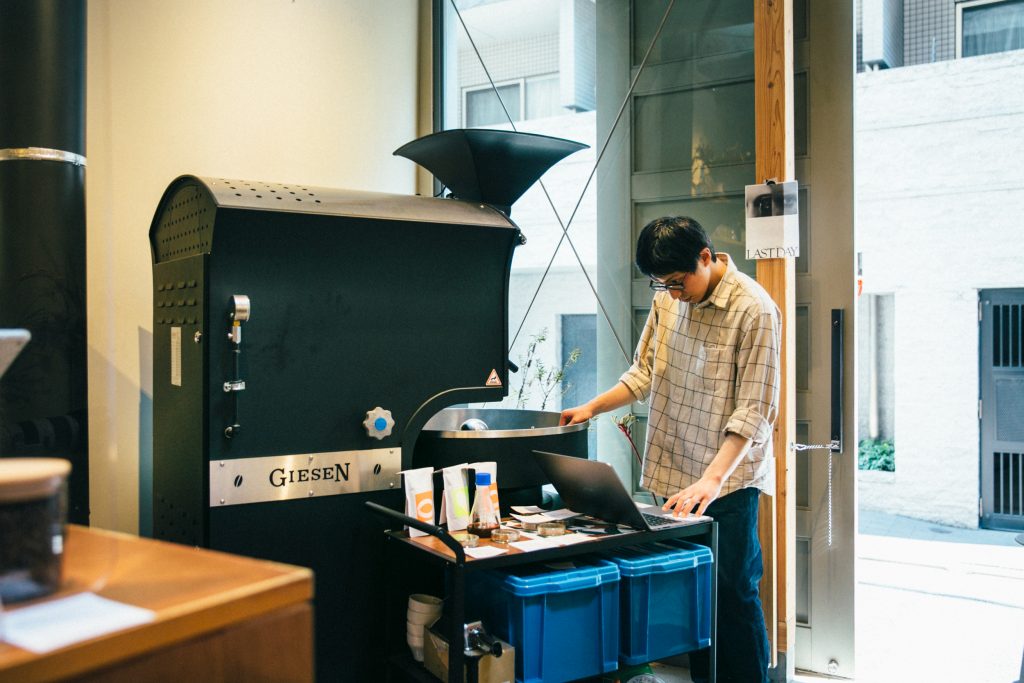
Kensaku Sato
Born in Hokkaido in 1983. Later moved to Sendai to study and complete his university degree. He then moved to New Zealand to study English, and upon returning to Japan, worked as an English teacher for two years. During this time, his passion for coffee grew. He went on a working holiday to Australia, Canada, and New Zealand to experience the world coffee scene firsthand. Returning to Japan again, he began working at a roastery in Kiyosumi Shirakawa. Now he is the roaster of SR, after a chance meeting with Mr. Kato in New Zealand led him to Kabutocho.
Text : Jun Kuramoto
Photo : Naoto Date
Interview : Jun Kuramoto
Kensaku Sato
SR Roaster
Interesting people in Kabutocho
I’m interested in Mr. Nishi because he is the same age as me. I have an impression of him as being quite stoic and someone that has had an interesting and creative life.
